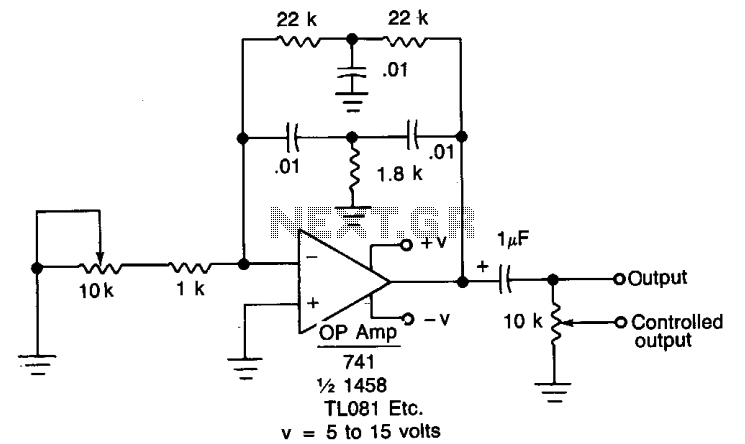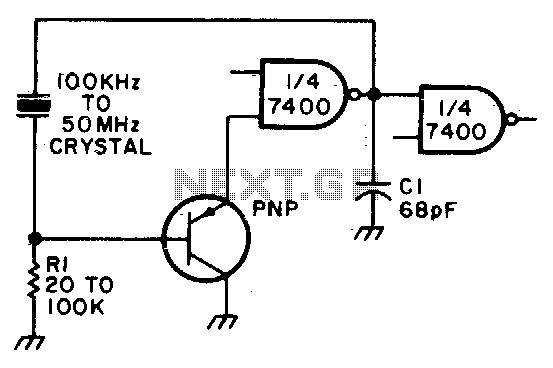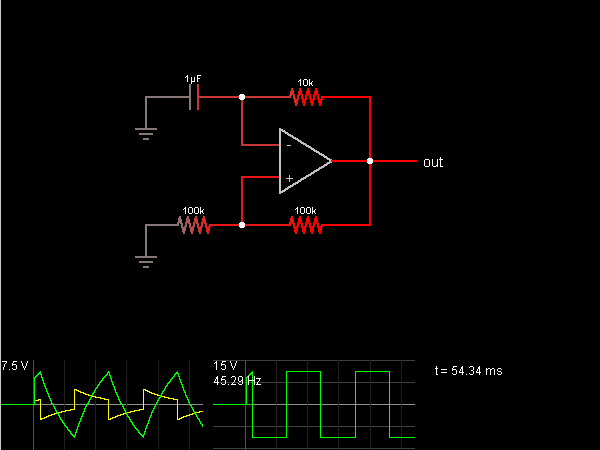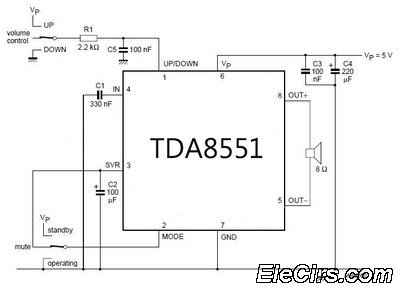
Low distortion oscillator
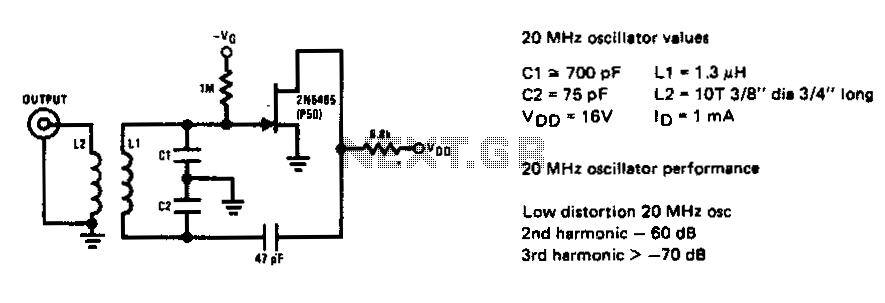
The 2N5485 JFET can oscillate in a circuit with very low harmonic distortion. This JFET local oscillator is ideal when low harmonic content is needed for an effective mixer circuit.
The 2N5485 is a Junction Field Effect Transistor (JFET) that is widely utilized in RF applications due to its low noise characteristics and ability to operate at high frequencies. In the context of a local oscillator circuit, the 2N5485 can be configured to produce a stable oscillation while minimizing harmonic distortion, which is crucial for maintaining signal integrity in mixer circuits.
A typical application of the 2N5485 in a local oscillator involves configuring it in a common-source amplifier configuration. This setup allows for the amplification of the input signal while providing the necessary phase shift for oscillation. The circuit design may include components such as resistors for biasing, capacitors for stability and coupling, and an inductor or crystal for determining the oscillation frequency.
To achieve low harmonic distortion, careful selection of passive components is essential. For instance, using high-quality capacitors and inductors with low equivalent series resistance (ESR) can help maintain the linearity of the oscillator. Additionally, the feedback network should be designed to ensure that the gain is just sufficient to sustain oscillation without pushing the transistor into non-linear regions.
The output of the 2N5485 local oscillator can then be fed into a mixer stage, where it will combine with an incoming RF signal. The low harmonic content produced by the oscillator allows for cleaner mixing, resulting in a more desirable intermediate frequency (IF) output with reduced spurious signals. This characteristic makes the 2N5485 JFET an excellent choice for applications such as communication systems, where signal clarity and fidelity are paramount.The 2N5485 JFET is capable of oscillating in a circuit where harmonic distortion is very low The JFET local oscillator is excellent when a low harmonic content is required for a good mixer circuit. 🔗 External reference
The 2N5485 is a Junction Field Effect Transistor (JFET) that is widely utilized in RF applications due to its low noise characteristics and ability to operate at high frequencies. In the context of a local oscillator circuit, the 2N5485 can be configured to produce a stable oscillation while minimizing harmonic distortion, which is crucial for maintaining signal integrity in mixer circuits.
A typical application of the 2N5485 in a local oscillator involves configuring it in a common-source amplifier configuration. This setup allows for the amplification of the input signal while providing the necessary phase shift for oscillation. The circuit design may include components such as resistors for biasing, capacitors for stability and coupling, and an inductor or crystal for determining the oscillation frequency.
To achieve low harmonic distortion, careful selection of passive components is essential. For instance, using high-quality capacitors and inductors with low equivalent series resistance (ESR) can help maintain the linearity of the oscillator. Additionally, the feedback network should be designed to ensure that the gain is just sufficient to sustain oscillation without pushing the transistor into non-linear regions.
The output of the 2N5485 local oscillator can then be fed into a mixer stage, where it will combine with an incoming RF signal. The low harmonic content produced by the oscillator allows for cleaner mixing, resulting in a more desirable intermediate frequency (IF) output with reduced spurious signals. This characteristic makes the 2N5485 JFET an excellent choice for applications such as communication systems, where signal clarity and fidelity are paramount.The 2N5485 JFET is capable of oscillating in a circuit where harmonic distortion is very low The JFET local oscillator is excellent when a low harmonic content is required for a good mixer circuit. 🔗 External reference


